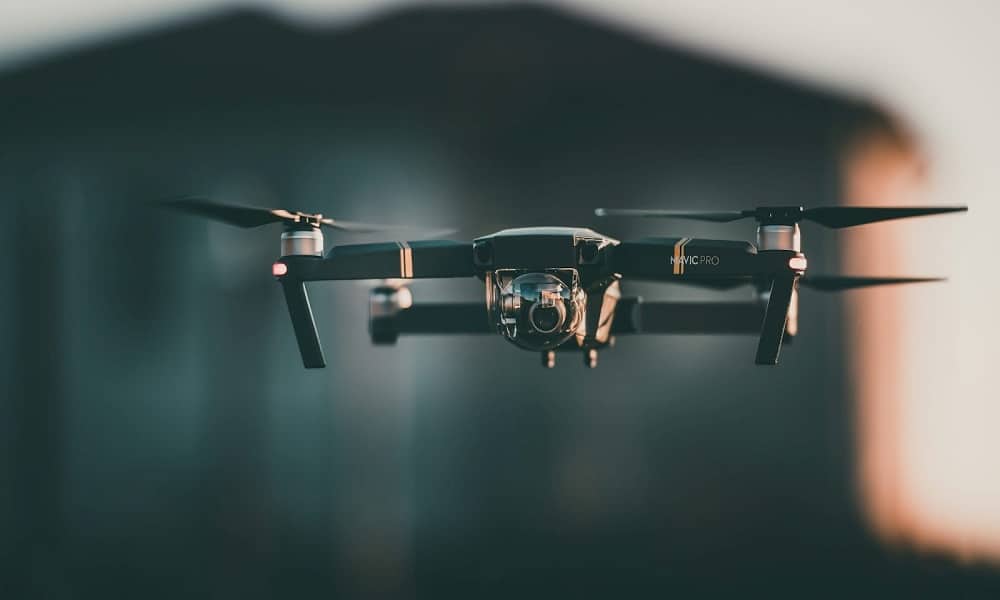Emerging technologies are revolutionizing how properties are presented in real estate.
From detailed 3D scans to immersive virtual reality, these tools offer buyers engaging ways to explore homes remotely while giving agents new methods to showcase spaces effectively and creatively.
Drone Photography Can Elevate Property Showcases
Drones can capture stunning aerial images and videos that highlight a property’s layout, surrounding area, and unique features. They bring a perspective traditional photography can’t match.
Aerial shots can show off expansive yards, proximity to landmarks, or scenic views.
For luxury homes or large properties like farms, this broad view makes an instant impression on potential buyers.
Beyond photos, drone-captured videos provide smooth virtual walkthroughs of the exterior of a property. Buyers can get a clear understanding of scale and layout before even visiting in person.
By incorporating drones into real estate presentations, agents can showcase properties more dynamically while making their listings stand out in competitive markets.
3D Point Cloud Scanning Can Shape Virtual Real Estate Tours
Real estate presentations often require intricate detail. Well, 3D point cloud scanning delivers unmatched accuracy by capturing millions of spatial data points to recreate properties digitally.
These scans allow buyers to explore highly accurate models of spaces without stepping foot inside.
Also, architects and designers can use the detailed data for renovations or future planning.
To create these realistic representations, sophisticated but easy-to-use tools generate a point cloud file from laser scans or photogrammetry. These files become the foundation for crafting interactive virtual tours.
For modern property presentation, this technology provides unparalleled insight into layouts, textures, and structural details in ways traditional photography never could.
Augmented Reality (AR) Can Be Utilized for Interactive Property Previews
Augmented reality adds a digital layer to real-world property exploration. Buyers can use AR-enabled apps on their smartphones or tablets to visualize furniture, finishes, or even entire renovations in an actual space.
This technology allows potential buyers to “try before they buy.” For example, seeing how a new dining set fits into an empty room provides immediate clarity and confidence.
Agents also use AR features during open houses by overlaying property information like dimensions or upgrade options directly on-screen. It saves time and creates personalized experiences that stand out.
By combining creativity with practicality, AR redefines how buyers interact with spaces while fostering emotional connections to properties early in the home-buying process.
Artificial Intelligence Can Enhance Personalized Buyer Experiences
Artificial intelligence supports real estate presentations through tools like recommendation engines, virtual tour enhancements, and interactive chatbots.
AI-powered recommendation systems on platforms can suggest similar homes to potential homebuyers based on search history or features viewed frequently – like price range or square footage.
During virtual tours, AI can provide extra insights by highlighting details about materials, energy-saving systems, or nearby services when a user interacts with specific elements of a property’s model.
And chatbots further assist by answering questions in real time during online browsing.
These AI solutions streamline interactions without replacing the personal touch agents bring to closing deals effectively.
Virtual Reality Can Transform Immersive Viewing Experiences
Lastly, virtual reality lets buyers experience properties as if they’re walking through them – no matter where they are. With a VR headset, potential buyers can explore every corner of a home in a fully immersive 3D environment.
This technology allows users to view detailed spaces, from the layout of bedrooms to the design of outdoor areas, all while feeling physically present in the property.
It’s especially valuable for out-of-town or international clients who can’t visit homes easily.
Real estate agents also benefit by hosting virtual open houses that attract multiple viewers at once without logistical constraints.
By incorporating VR into presentations, realtors can offer convenience and clarity that’s unmatched by static images or videos.
Digital Twin Technology for Real-Time Space Visualization
Digital twin technology creates a precise virtual replica of a property, enabling real-time interaction and visualization. Unlike standard 3D models, digital twins dynamically update with data or changes made to the physical property.
In real estate presentations, this can be used to demonstrate modifications like furniture placement, wall removals, or even seasonal landscaping effects.
Buyers can interact with these replicas through devices such as tablets or computers, exploring how adjustments impact the space.
This approach is especially useful for off-plan developments. Buyers can see detailed visualizations of properties still under construction and understand how finished homes will look and function.
By using digital twin technology in presentations, agents can deliver an engaging and flexible way for buyers to envision both current features and future possibilities within a property.
Wrapping Up
Emerging technologies are redefining property presentations, offering immersive and engaging experiences for buyers – while enhancing real estate agents’ tools.
From drones to digital twins, these innovations empower the real estate market with creativity and precision that traditional methods simply can’t match.


